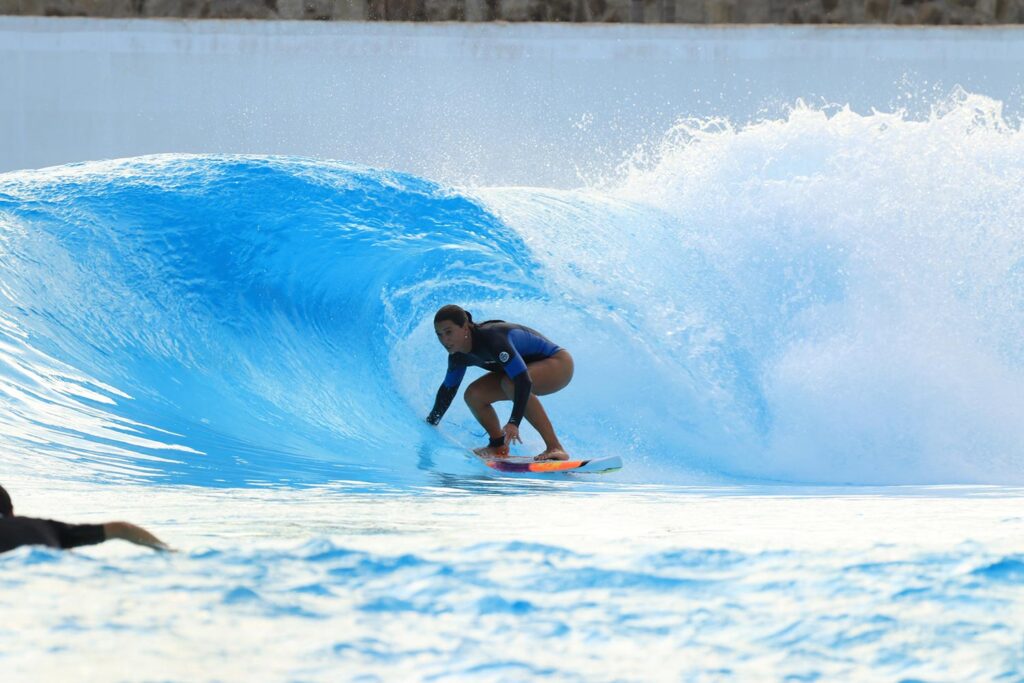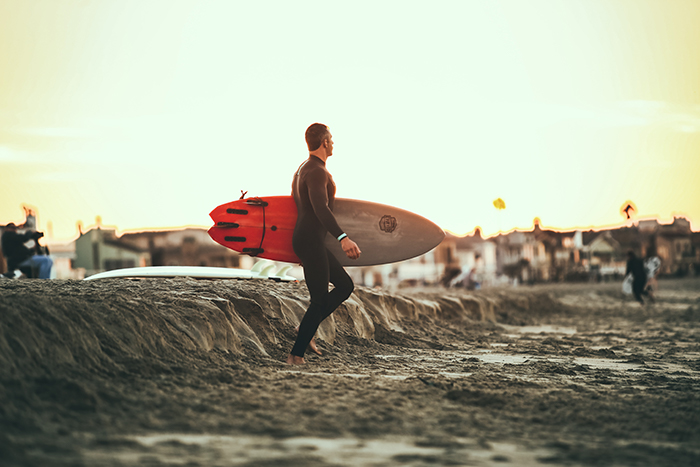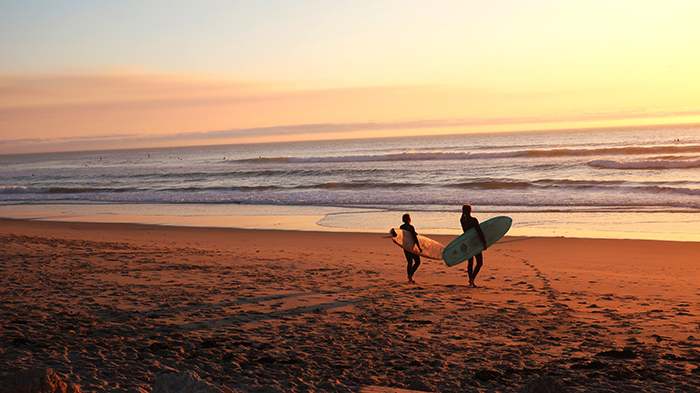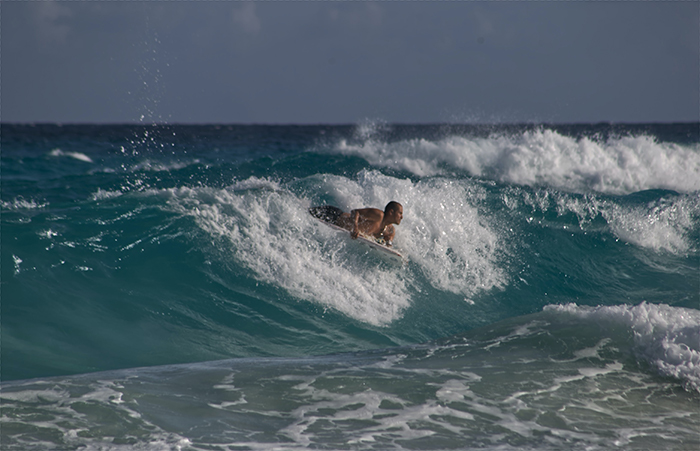
27 May, 2024
· 0 comments
Since ancient times, human beings have used water as one of their best and greatest resources for the existence, development and evolution of their lives.
Water has always been a great attraction for man and his eagerness to conquer and have fun in it; this has led him to create diverse sports whose center of practice is the waters of the seas and oceans.
Around the world you can practice a variety of water sports and every day the number of fans and athletes of these specialties grows.
One of these water sports that has gained many followers is Bodyboarding and today we will tell you a little more about it.
Follow us! Let’s get to know what Bodyboarding is all about…

Picture of a surfer coming out of the water in Newport Beach, USA. | Photo by Austin Neill on Unsplash.
Bodyboarding or Bugui as it is also known, is a water sport that is performed in the surface waters of the coasts, on the shores of the beaches; for its execution a board similar to those of Surf is used, a little smaller and more flexible.
To practice it, a short board is used; its size is approximately one meter long, flexible and the sportsman must use a pair of additional fins.
Some of the best known “Bugui” in the world of this sport are from Hawaii, like Mike Stewart, Jeff Hubbard and Ben Severson.
We can also mention the Australian Ryan Hardy and the Brazilian Guilherme or the world champions Pierre Louis Costes and Amaury Lavernhe, both French.
The beginnings of what we know as Bodyboard go back to the times when the inhabitants of the Hawaiian Islands rode the waves on wooden boards of Acacia koa, a tree native to that area; these boards were called “alaia”.
The diaries written by Captain Cook, in the year 1780, give account of the practice of men and women of this activity, from which the Bugui has been developed.
Many years later, Tom Morey, used a Bugui board for the first time, when his surfboard broke in half while he was trying to conquer one of the best waves in Hawaii.

Image of two surfers in Figueira da Foz, Portugal. | Photo by Sacha Verheij on Unsplash
We cannot say that there is an inventor as such of the Bodyboard, because this practice was carried out by the ancient inhabitants of Hawaii, according to some records that Captain Cook left in the 1780s.
The natives of the islands mounted waves on boards of a native tree of the zone and thus Cook testified it.
Tom Morey, can be called the inventor of the Bugui in recent times, because he used a Bodyborad board for the first time, when trying to ride a wonderful wave in Hawaii, it broke in half; then he took the part that was floating, rode a wave and finally reached the shore.
In the 90’s, the sport was strengthened and revived by Bodyboarders like Guilherme Tamega, Michael Eppelstun and Ben Holland, who improved and enriched the acrobatics and maneuvers of the sport.
Phylis Dameron, was the first lady to ride a bodyboard in Waimea’s great bay, during the 70’s; in the 90’s, Mariana Nogueira, Glenda Koslowski and Sthepanie Petterson raised the participation of women in the Bugui and took it to a worldwide level.
Today there are great male figures of Bodyboarding as the champions Pierre Louis Costes, Amaury Laverhne, Ian Campbell, Jared Houston, Jacob Romero and many others that enlarge and position Bodyboarding more and more every day.
They are the cheapest and most accessible on the market; the lightest and most suitable for beginners and children.
Ideal for beginners in the world of bodyboarding, they are very flexible and make it easy to move around in the waves regardless of their size.
They are very light too; they are made with a solid rubber part or have a smooth bottom. For expert sportsmen, boards are manufactured with less flexibility.
The manufacturers make a combination of materials to achieve very light boards but with great strength and durability, resulting in strengthened products, especially for the practice of high-level bodyboarding.
If you are wondering where you can rent surfboard in Lanzarote, in our surf center we have been offering this service for years, so if you are in the Canary Islands or in Caleta de Famara, Calima Surf is your best option 😉 !

Picture of a surfer with a bodyboard in Cancún, México. |
Photo by Lucia Lua Ramirez on Unsplash
Next we will see all the material that we will need when practicing bodyboard:
We want to remind you dear reader, that in Calima surf we offer surfing classes and courses, kite surfing, Stand up paddle, diving courses and yoga classes for all levels and all year round. Below you can see some of the services we offer in our surf school, come and enjoy with us, we are waiting for you!
Comments
Leave a comment
Your e-mail address will not be published. Required fields are marked with *.